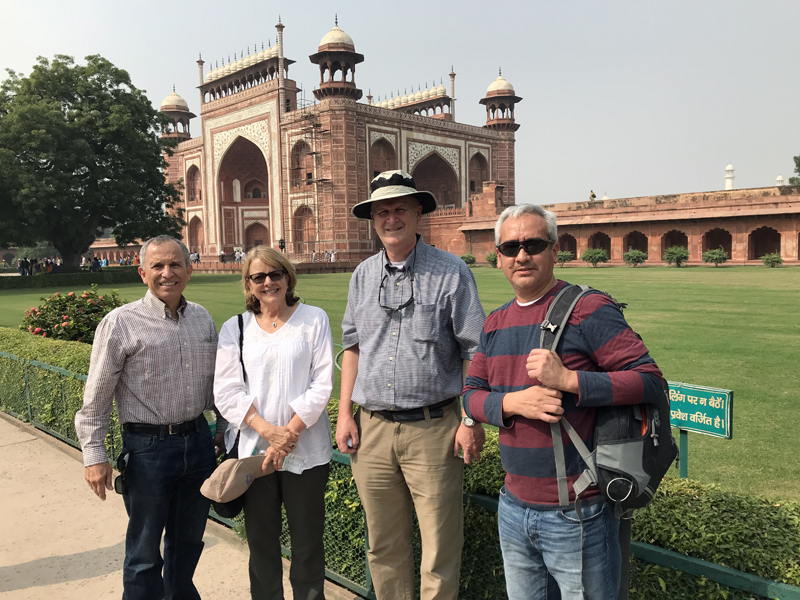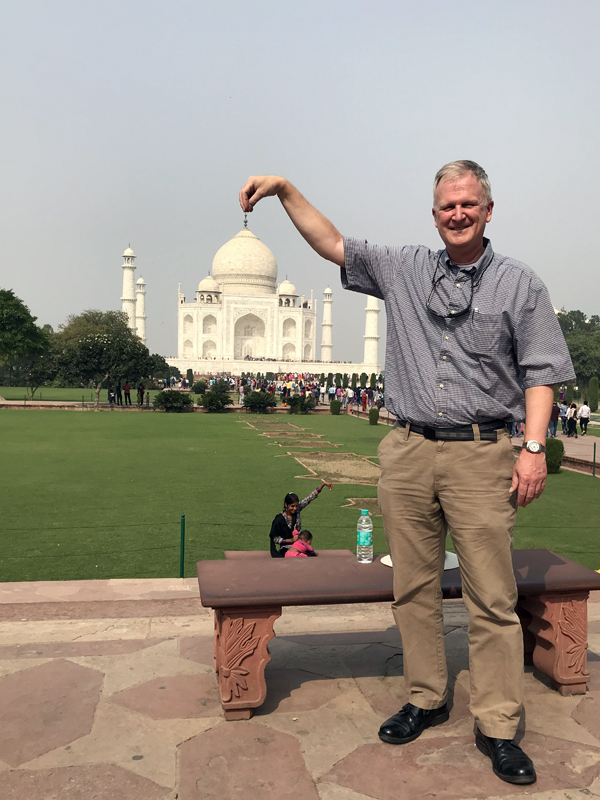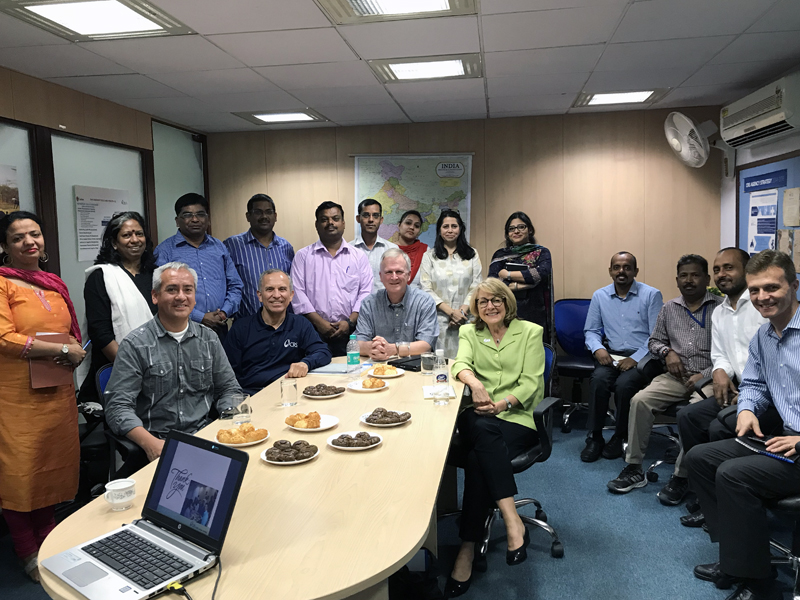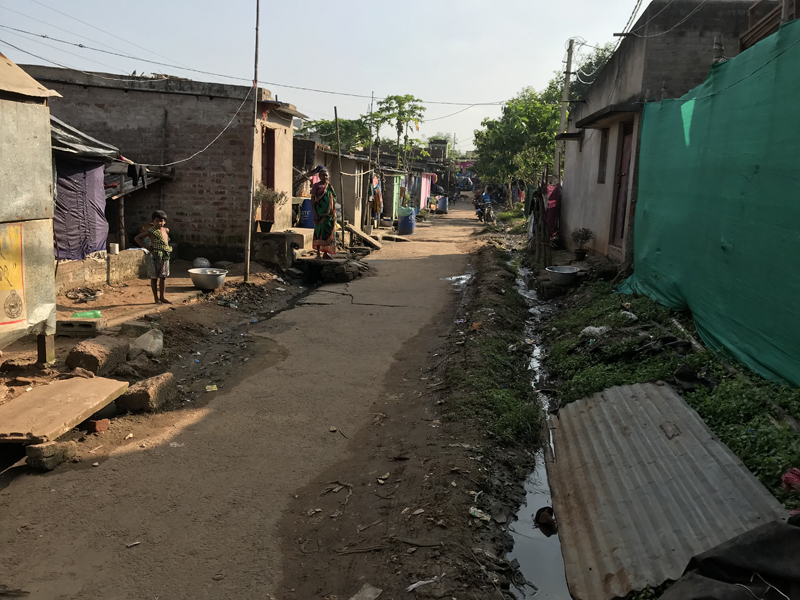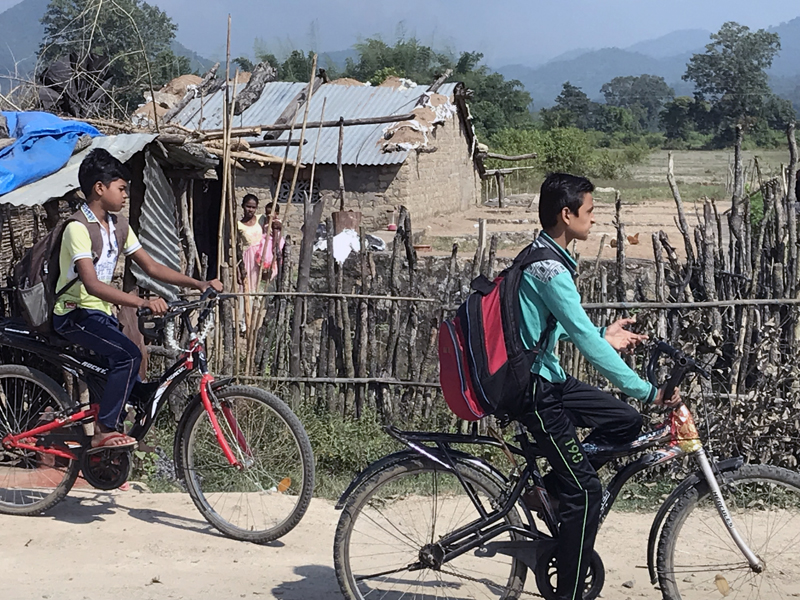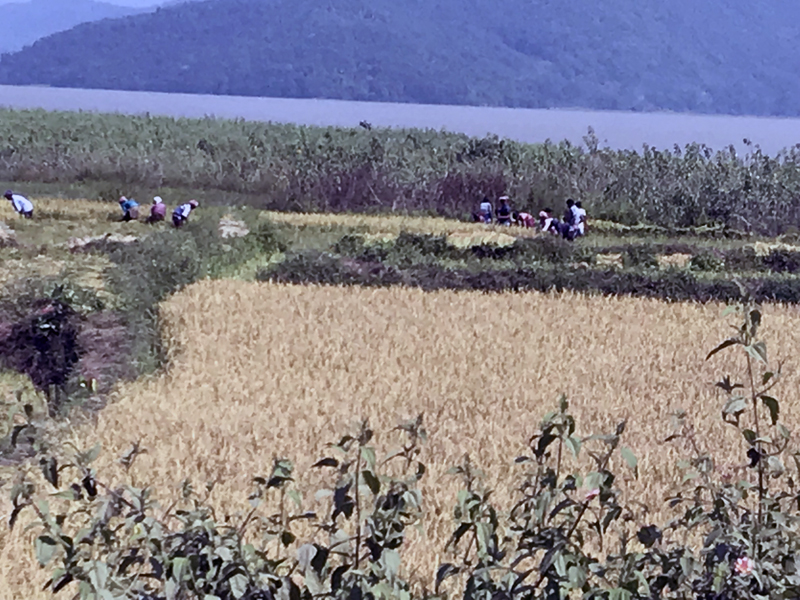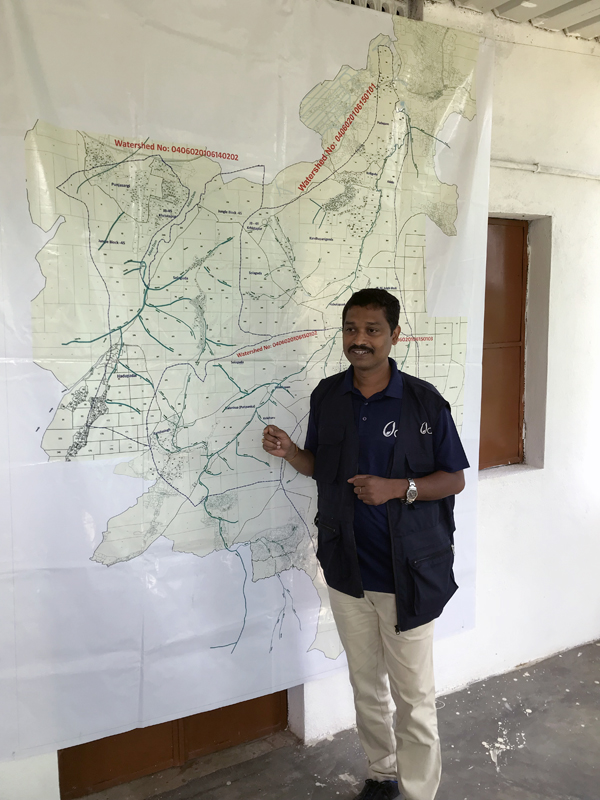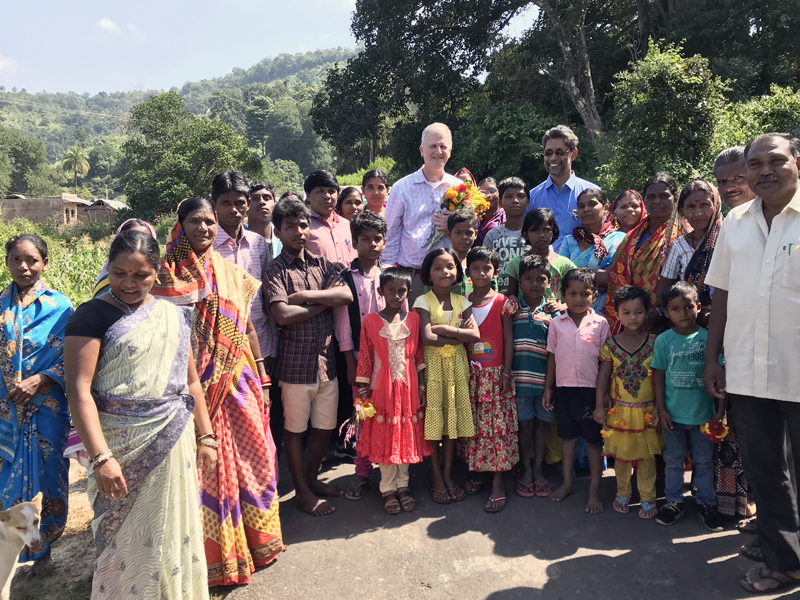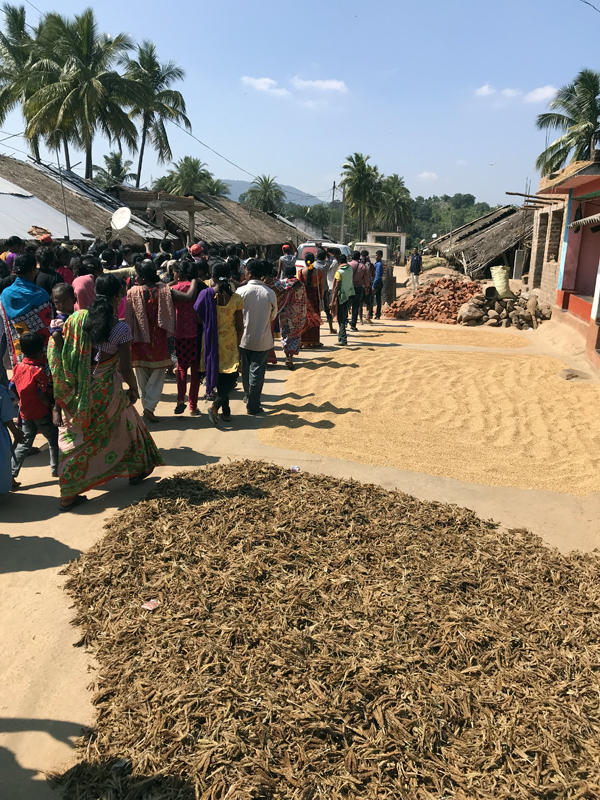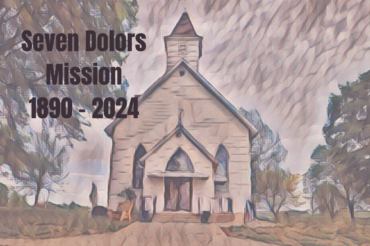The Amazing Drama of India
“There are nations—many of them with a majority of Christians—which enjoy an abundance of goods, while others are deprived of the necessities of life, and suffer from hunger, disease and all kinds of afflictions. This scandal must be removed from among men, for the glory of Christ’s Church and its testimony to the world are the spirit of poverty and the spirit of love.” (Gaudium et Spes, “The Pastoral Constitution on the Church in the Modern World” of the Second Vatican Council, 88)
Sunday before last, I landed a bit after 9 p.m. in Delhi, India, and joined my other three traveling companions as part of a Catholic Relief Services (CRS) delegation to see several of the agency’s projects. CRS is the international relief agency of the Catholic Church in the United States and is under the authority of the bishops of the United States Catholic Conference. I was elected in 2015 to serve on the CRS Board of Directors and this trip was my first to experience the agency’s work abroad.
Our initial briefing on India confirmed what we experienced at first sight: India is a study in contrasts. It is at once a vibrant, young, culturally rich country as well as a country with stark poverty and complex human problems. To be more concrete, consider this: India’s population is approaching 1.5 billion; roughly a quarter of the world’s people live in India and in less than ten years India will overtake China as the world’s largest population; there is a growing middle class—currently at 267 million; the average age of the population is 18; literacy has increased to 74 percent. Nevertheless, 42 percent still live in extreme poverty, surviving on $1.25 or less each day; 1/3 of the global poor are in India; 38 percent of children under 5 are stunted because of malnutrition. India is 80 percent Hindu, 14 percent Muslim and 2.5 percent Christian, of which 60 percent are Catholic. 69 percent of the population is rural. To top it off, India has tigers and elephants—it is a fascinating and colorful place!
In the six days I was there, I witnessed the human drama of life in India and the Church’s role in bringing assistance to those in need. In the face of such massive numbers, CRS has positioned itself to make a large impact with finite resources. This is accomplished by a variety of partnerships, including the local dioceses and archdioceses, relying on the help of thousands of local people.
Our delegation visited projects that focused on three of the agency’s priorities for India: agricultural livelihoods and food security; mothers’ and children’s health; women’s and children’s vulnerability to human trafficking. Our first field visit was in the city of Hyderabad, roughly 800 miles south of Delhi, where we met with the local archbishop. He shared with us the plight of the small farmers in India, who struggle to survive in the face of severe drought and other stresses. In the past decade, roughly 325,000 small farmers in India have committed suicide out of despair. The archbishop shared with emotion a recent incident in which a local farm family committed suicide together. CRS is engaged in assisting farmers to weather the difficulties with the help of the local church.
Next, we traveled to the Prajwala shelter home which rescues and reintegrates young women and children from the growing scourge of human trafficking. With such abject poverty and a burgeoning number of children, many young women and girls are especially vulnerable to human trafficking for the purposes of prostitution and the organ trade. Prajwala was begun by a Salesian priest and local Indian woman, and with the help of CRS, it has grown to its present sites around Hyderabad, which help victims through loving care, education and a variety of other services. We visited the vocational shops where adolescent girls were running band saws and making wooden furniture, printing and binding new books, doing metal and textile work. All the children are in school, and we were taken on a tour of the school by two girls of about 13 years, themselves rescued from traffickers. They beamed with pride as they introduced their classmates and told us of their progress. We were not allowed to take pictures in these places, and the buildings for this work were walled in with electrified wire across the top to prevent the traffickers from coming unannounced to remove the girls. One of the staff told us the story of a girl who had recently died from the effects of prostitution, who said near the end of her life: “When I was in the brothel, I wished I could die; and now that I am here in this place, I wish I could live, and I am dying.” One can think of few things more evil than the sex trafficking of children and young women. Since its founding, the Prajwala shelter home has rescued over 17,000 women and children from this evil.
Our next stop was the city of Bhubaneswar, on the eastern coast, in the state of Orissa—predominantly rural and among India’s poorest regions. Our first visit was to one of the city’s 436 slums. Slums present many dangers to children; among them are exploitation for child labor, dropping out or never attending school, being sold into sex trafficking or for the selling of human organs, being physically and sexually abused.
As we moved into the slum neighborhood of approximately 500 residences made of boards, pieces of sheet metal and a variety of other makeshift materials, we could see a small concrete building which bore the title, “The Lucky Children’s Club,” a name given by the children. This place effectively served as a community organization to equip slum children with a vision of what a child friendly city ought to look like: one in which children are safe, clean and cared for. They, about 50 children, most of whom were 12 years and younger, were eager to welcome us. After singing several lively songs, they took us on a tour of the slum, their neighborhood. As we walked up a slight grade, with dirty water and garbage running down each side, we came upon the slum’s water source, a single spigot. The homes were mostly one room, side by side. The children and the residents welcomed us with enthusiasm and spoke of their dreams of getting an education and their futures. At the end of the tour, a little girl asked quite innocently a member of the delegation, “What do you think of where we live?”
Our second visit was to the remote villages about 180 miles to the south, where we inspected the agricultural and environmental projects CRS is supporting with the local diocese. As we arrived in each of these remote villages, the entire population welcomed us with flowers and music and processions. We learned how we were helping the local farmers to grow different varieties of rice and other products to provide more nutrition to their diet, but also to produce greater yields and extra crop plantings per season. This provides more and better food, along with a surplus for selling, with profits going to better health care, education, and other necessities. Other projects in this region are helping protect the watershed, decrease erosion, and improve soil quality.
This snapshot of my week in India is just that, a brief encounter with a complex and beautiful country. Reflecting on this trip, I am both amazed and frightened. As I rode the streets and highways observing so many of the poor, I marveled at how they were able to survive on so little. Mostly, I was left with an experience of love—the love of God for all human beings. I thank CRS for allowing me to see the great, and often inspiring work being done on behalf of the Catholic people of America. I was humbled to be a representative and receive the thanks of those we assist, and to thank them for the love they gave to us.
+ Bishop James V. Johnston, Jr.
Catholic Key, November 10, 2017 issue


